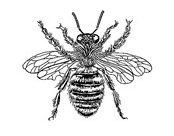I would like to introduce another long-time friend of mine.
Mr. Crinkleroot.
I could tell you all about him, but I think I will let him speak for himself. “Crinkleroot was born in a tree and raised by bees.” How cool is that? “He can whistle in a hundred languages and speak caterpillar, salamander, and turtle, too.” I want that Super Power! But most importantly, “he knows all about wild animals, even the ones that live around your house.”
Mr. Crinkleroot, you see, is a rugged naturalist, a creation of Jim Arnosky, self taught writer, artist and natural scientist.

My son and I first met Mr. Crinkleroot when my son was just a wee thing, maybe preschool or kindergarten age. We had read this wonderful book called Owl Moon by Jane Yolen and my son wanted to learn more about owls. A library catalog search led us to All About Owls by Jim Arnosky, which led us to dissecting our first of many owl pellets and thus began a long relationship with Mr. Arnosky and Mr. Crinkleroot.
“Education is not the filling of a pail, but the lighting of a fire,” wrote William Butler Yeats. Lighting that fire, raising the curiosity, that is what Mr. Crinkleroot did in our household and what he has done for a great many other children.
Our family has kept a nature collection for many years. Throughout this post, there will be photographs of Mr. Arnosky’s books, along with items from our nature collection. For us, the two went hand in hand. The more we read about and studied nature, the more we discovered, even when we weren’t looking for it. Suddenly that dead moth on our driveway wasn’t just a dead moth on our driveway. It was something to observe, something to admire, something to collect. No animals or insects were harmed in the making of our nature collection. (The tree was harmed, but it needed to go and a dozen better adapted trees were planted in its place. The turtle shell was found on our property as is. I fear it was our neighbor’s turtle that escaped their yard several years before I found its remains.) Please be sure to look at Mr. Arnosky’s art work in the photographs. The attention to detail is what drew us into his work.

We now own more than a dozen of Mr. Arnosky’s books. Don’t be impressed by our collection. He has written and published more than 130-some books! I obviously have more book collecting to do before I even make a dent in his publications.
Besides Mr. Arnosky’s amazingly detailed illustrations, the drawings are often life size. Thunder Birds, in particular, has fold out pages that show the real size of a pelican’s beak and an osprey’s wing span. Did I mention he is a self-taught artist?! That fact is even more impressive when you see his illustrations on that larger scale.

Big Jim and The White-Legged Moose, thankfully, is not drawn life size. The tall-tale was inspired by Mr. Arnosky’s real life encounter with a bull moose in the fall of 1987. “Big Jim dropped his art supplies and climbed a nearby birch. With the bull below, Jim prayed, as if he were in church.” I won’t give away the ending, but it is a fun book worth seeking out.

Crinkleroot’s guide books inspired a great many nature hunts and explorations of us. Crinkleroot’s Guide to Knowing… The Trees… Butterflies and Moths… Walking in Wild Places… Animal Habitats… These books are very informative, with practical information like how to identify poison ivy and poison sumac. Crinkleroot’s Guide to Knowing Animal Habitats details the three most common types of wetlands – marsh, bog and swamp – along with drawings of what animals might be found in each place. As with many of his drawings, every butterfly and moth featured in Crinkleroot’s Guide to Knowing Butterflies and Moths is shown real size. His information – as detailed as it is – is always presented in such a way that even the youngest child can appreciate.

Mr. Arnosky’s books reflect his admiration of other naturalists before him, such as John Muir and John Burroughs. Field Trips, a book that continues to inspire me to grab my binoculars and field guides and head out on a hike, was dedicated to the great ornithologist, Roger Tory Peterson. Field Trips, like all of his books, is a treasure trove of his art work – more than 300 drawings and 175 identification silhouettes.

If you are looking for a book for an older child, or even for yourself, Nearer Nature is Mr. Arnosky’s reflections and observations of life on his Vermont farm. Secrets of a Wildlife Watcher is another great book for older readers, as it explains how to find and observe wild animals in their various habitats.

“When you witness an intimate tidbit of a wild animal’s private life, glean all you can from the experience. Pay attention to the details, and wonder about what you see… Don’t just look. Observe…You can always be sharpening your powers of observation.” (page 44 of Secrets of a Wildlife Watcher) Whenever I read that quote, I am reminded that some medical schools today require their students to study art, as that power of observation, being able to look and find the smallest detail, is fading away, yet it is an important skill to have and to hone.
I would like to end this post with a direct quote, as I couldn’t say it better myself. “(Crinkleroot) can find puzzles hidden among the leaves and stories written in the snow. There’s nothing he’d like better than to share them with you.” ~ Jim Arnosky

